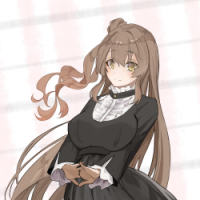Ho scoperto, e forse per qualcuno è l'acqua calda, che i turni erano stati già introdotti in giappone nei giochi di ruolo ben due anni prima Dragon Quest.
The Black Onyx...questo nome mi è sempre suonato familiare, sono svariati anni che lo conosco ma mai mi sono informato su cosa effettivamente si nasconde dietro al gioco in questione.
Per una serie di casi, oggi sono incappato in questo titolo risalendo dalla compagnia che l'ha sviluppato, Bullet-Proof Software.
BPS, l'acronimi con cui si sono fatti conoscere attraverso altri giochi fino al sfamicom, è uno studio giapponese nato nei primi anni 80, fondato dall'olandese Henk Rogers e pare che proprio questo signore abbia introdotto i giochi di ruolo videoludici nel mondo del sol levante.
Nel 1984 fa uscire su PC88 (e dove sennò?) il sopracitato The Back Onyx, gioco di ruolo che si rifà ai canoni occidentali, con dungeon in soggettiva (un solo dungeon e una sola città), turni e party di 5.
questa è la versione msx
questa la cover
Occidentale nell'anima ma giapponese alla anagrafe. Il primo vagito ruolistico in giappone.
Ed ecco la storia del gioco:
QuoteQuoteOK, visto che ho cominciato, prosegue con un miglior approfondimento su come The Black Onyx è nato. Le parti in italic sono interventi dello stesso Henk Rogers che ho trovato sulla rete.
Henk Rogers, americano di origini olandesi, arriva in giappone nel 1976, giovane e senza un lavoro. Ma di certo il suo sbarco nel sol levante non era destinato a rimanere una goccia nel mare: nel giro di otto anni scriverà e svilupperà il suo primo videogioco e farà conoscere al giappone un genere videoludico sconoscoiuto. Nel giro di 12 anni invece farà conoscere al mondo intero Tetris, un gico "scoperto" in una manifertazione di elettronica a Las vegas, finendo addirittura in russia con Nintendo per stringere un accordo di esclusività sulle console da gioco.
Il mercato dei videogiochi per PC in giappone incominciava ad avere un ceto significato nel 1982; Roger se ne accorse e decise quale sarebbe stato il suo passo successivo.
"I was an avid gamer as a student at the University of Hawaii in the 1970s, I'd joke that my minor was in Dungeons & Dragons. We had a gamer's club called ARRGH (Alternative Recreational Realities Group of Hawaii) where we'd play with our own unique rule-set, and I think it was here that I caught the game design bug.
Personal computer software publishing became a viable business in Japan in 1982. I noticed shops selling computer games on cassette tape popping up here and there, so I decided I wanted to make a game, went down to Akihabara and scoured the shops to try to work out what might be involved."
La piattaforma scelta fu il NEC-8801 (il PC 88) e per preparare tutto il materiale lavorativo arrivò a spendere l'equivalente di 10 mila dollari. Mancava solo l'idea su cosa fare, quale gioco sviluppare.
Venne così l'idea di creare qualcosa che in giappone non esisteva ancora, il RPG.
"I made a conscious decision to develop a game type that existed in the US but not Japan. There were no RPGs - computer or paper - to speak of in the country at the time, so I decided to take a chance and do one. I didn't speak or read Japanese back then, so it was a total reverse engineer of titles I had enjoyed back home.
I decided to make a roleplaying game. What I didn't know is that they didn't have Dungeons & Dragons in Japan. The precursor to American roleplaying games like The Temple of Apshai, Wizardry, and Ultima was Dungeons & Dragons, and you kind of have to know how to play Dungeons & Dragons before you can play those games.
As I started building it, I started realizing, "Oh my God, I have to teach people how to play roleplaying games from scratch."
Il gioco preso a modello fu Wizardry, ma Roger puntava a una grafica più completa e comprensibile.
"I had played The Temple of Apshai. I played a little bit of Ultima. But I played more Wizardry.
Basically, I took off from Wizardry. Wizardry was wireframe 3D, but it was mostly text. The rest of it was text. You couldn't see your own character, you couldn't see most of what was going on, and so I wanted the game to be more visual so that people could understand that they were in that kind of a world. "
Il gioco venne progettato, disegnato e scritto da lui e lui solo in nove mesi; era il 1983.
Di problemi ne sorsero, come quello di comprimere il progetto nei 64K di RAM che la piattaforma offriva, un limite che constrinse Heck a ridurre il gioco al 20% rispetto all'idea originale. Ad esempio erano previste 3 classi di job, ma il gioco finale ne offriva solo uno: il guerriero. Il mago venne introdotto solo nel seguito The Fire Crystal (1986) mentre la premessa del terzo capitolo, che non vide mai la luce e avrebbe potuto chiamarsi Moonstone, era la classe monaco.
Ma non tutto venne tagliato a causa di limiti hardware: un altro problema era infatti quello di rendere il gioco accessibile e comprensibile al pubblico.
"I divided the development job between the only languages available for the machine: BASIC and assembler," he explains. "The game had two main technical elements: movement and everything else. Movement was a fake 3D like Wizardry written in Z80 assembler while the graphic editor, map editor and everything else was coded in BASIC.
The 20K of graphics space was split evenly between monsters and humans, opting for variation instead of animation: 30 monsters, 28 human bodies and 50 human heads. I also built a name generator, which gave each character you meet in the game a name in addition to their individual appearance. The plan was that your character was going to be your avatar and you could move it from game to game, friends' games and sequels, on a cassette tape. It was all quite innovative stuff.
I had to strip a lot out of the game that I had originally envisioned, to just make it an introductory roleplaying game. But it had miniatures. You could choose your own head, and you choose your own clothes all in 64K."
Ma fare in modo che il gioco arrivase nelle case dei giapponesi era tutt'altro paio di maniche. Il primo accordo di distribuzione fu in fiasco.
"Halfway through development I pitched Black Onyx to a publishing company and made a verbal agreement with the president for a distribution deal.
We agreed to split the profit after subtracting marketing and manufacturing costs. After three months of work I could see the light at the end of the development tunnel and told them I wanted to formalize the agreement. But the paperwork they tried to get me to sign bore no resemblance to the original verbal agreement. I pulled out of the deal, leaving me without a publisher."
Il secondo accordo invece prometteva bene. Softbank, un distributore di giochi per PC (in attività tutt'oggi a quanto pare), gli suggerì l'auto pubblicazione, ovvero di crearsi una compagnia di publishing, garantendogli allo stesso tempo un cospiquo ordine.
Con 50 mila dollari Rogers fondò così la Bullet-Proof Software.
"In desperation my wife called Softbank, a PC game distributor, to ask them for an introduction to a reliable publisher. After they had heard my pitch they advised us to self-publish, saying that they would place a large initial order to help out once the game was finished. In their words, all I had to do was 'get my wife to answer the phone'. Obviously publishing is not that simple, but we naively did it anyway, borrowing $50,000 from a friend to set up Bullet-Proof Software. It was one of the best decisions I ever made."
Ma le cose non andarono come previsto. Il gioco fu terminato in tempo per il natale del 1983, ma Softbank ritirò la promessa fatta sull'ordine e invece di acquistare 3 mila copie del gioco, ne ordinò solo 600. Le scarse capacità imprenditoriali di Rogers non aiutarono e per di più c'èra il grosso problema che la gente non sapeva cosa fosse un RPG, un problema non da poco in sede di marketing.
"The game was finished just in time for Christmas 1983, but Softbank reneged on their promise to initially order 3,000 pieces and ordered 600 pieces instead. My rudimentary advertising campaign resulted in zero phone calls in the first month and four in the second after we had added some screenshots to the ads. The word had not got out; nobody knew what an RPG was and we were on the brink of collapse."
Ma Rogers non si dieie per vinto e attuò un piano ben preciso. Mostrare il gioco di persona nelle sedi dei magazine per computer, con un set di domande già pronte per la spiegazione del gameplay.
"I rolled up my sleeves and started knocking on doors. I visited every computer game magazine in Japan, sat the editor down and created his character. I had a set of questions I'd ask them in Japanese: 'What's your name? Which one of these 50 heads looks the most like you? Please pick out some clothes to wear'. Then I'd tell them: 'This is you. Now we are going to go on an adventure'. I would play with their character for an hour while they looked over my shoulder. That way they'd see how to map with graph paper and pencil, how to explore the world, and buy and equip amour and weapons."
Il piano funzionò e il gioco fu coperto da tutte le riviste del settore sul numero di aprile 84', con tanto di recensione.
In un mese vennero vendute 10.000 copie di the Balck Onyx, all'esorbitante prezzo di 7,800 yen, il più alto mai visto per un videogioco a quei tempi.
Votato come gioco dell'anno dai lettori di Login (la famistu di oggi in sostanza, per importanza e popolarità) il gioco piazzò 150 mila copie, noleggi esclusi. Fu un grosso successo.
Su cosa accedde dopo al genere Roger dice:
"I saw so many elements of Black Onyx replicated in subsequent RPGs and even titles across other genres, but what can you do? For example, I ditched the numbers that indicated player health for blue bar-graphs that turned red as the player got damaged. This system is widely used not only in RPGs but in fighting games such as Street Fighter and Virtua Fighter today."
Nel team di Bullet-Proof Software c'èra anche un certo Hisashi Suzuki, uno studente della Keio University che aveva il compito di scrivere il manuale di gioco. Suzuki diventerà il presidente di Square Enix.
"I meet a lot of people in the industry in Japan. Some don't know the history," says Rogers. "When I mention I used to have a publishing company in Japan, Bullet-Proof Software, they ask if I had anything to do with Black Onyx. I say I designed and developed it and a lot of the time they'll exclaim: 'Oh my god, you're the reason I'm in this industry!'"
Bullet-Proof Software sviluppò un sequel nel 1986 e il brand vide la luce anche su altre console (come nes e gameboy) e forse ci sarebbe pututo essere anche un terzo Balck Onyx, ma Rogers capì che ormai non era più in grado di afferrare quello che era riuscito a mettere in moto.
Il gioco di ruolo venne divorato dai giapponesi e manipolato sotto sembianze ormai estranee ad un occidentale. Il giappone, con il suo stile e la sua cultura, si era appropiato di un nuovo genere videoludico, creando così il "JRPG".
E così Roger passò ad altro, qualcosa di altrettando poderoso e forse anche di più...passò a Tetris.
"The game made such a huge impact and caused so many clones to be developed I fast realized we just could not keep up. Dragon Quest was a game built specifically for the Famicom and Famicom players. The graphics and the story come from the manga world, which inevitably resonated with the Japanese psyche much louder than the Lord Of The Rings style I was familiar with. A westerner cannot compete with that kind of cultural incisiveness, so I started looking around the world for games to bring to Japan instead. I guess then, in some ways, the success of Black Onyx was not only responsible for Final Fantasy but also for Tetris."
E i diritti di Black Onyx ? sono ancora in mano a Rogers.
Dopo il debutto su PC88 e PC-8801mkIISR The Black Onyx venne convertito per altre piattaforme, come PC98, X1, FM7, MZ-2500, MSX e Apple II. Nel 1988 venne rifatto sul famicom, cambiando nome in Super Black Onyx, mentre nel 2001 rivecette un secondo remake per GameBoy Color, edito da Taito.
The Fire Crystal venne rilasciato su PC88, X1, FM7 e MSX.
Oltre a The Moonstone, sarebbe dovuto uscire anche Arena, ma furono cancellati.
Bullet-Proof Software però si fece conoscere in giappone anche per altri giochi, come Tetris e altri puzzle game con suffissi "tris" (Hatris, Welltris...) o il più famoso Yoshi's Cookie, action game come Star Wars level assult 2, altri jrpg come Beast and Blades o Chou Mahou Tairiku WOZZ, aver curato la versione giapponese di Herc's Adventure o del picchiaduro di Star Wars per psx e altri ancora.

 Connettiti
Connettiti Registrati subito
Registrati subito




 Torna su
Torna su














